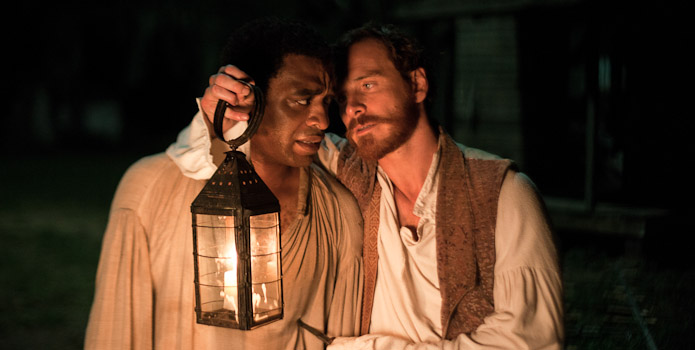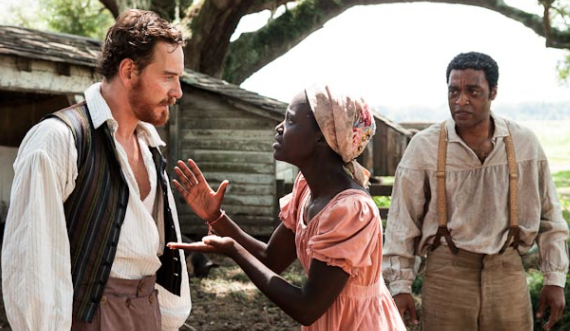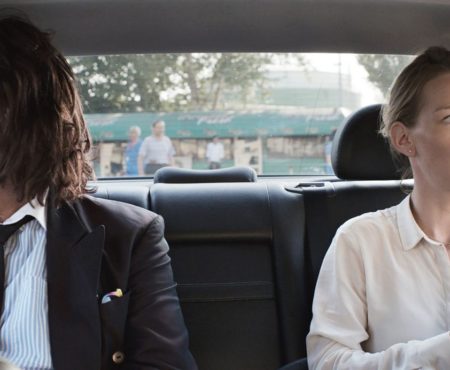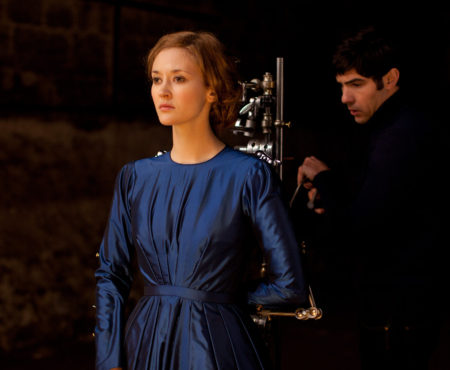Cotton plantation, sultry afternoon after a hard day’s work. Male slave is sitting on a porch of a wooden hut, hunched, nibbling at a modest meal, served on a metal plate. The camera stops at the surface of the dish: one next to another lays a scrap of fried bacon, a piece of bread and some blackberries. The man slowly tilts the plate, blackberry juice runs down its surface, evenly diffusing around its edges. Suddenly the colors and structures merge, as if led by firm, purposeful brushstrokes. In that fleeting moment an image from the film turns into a Rothko-inspired painting. McQueen’s artistic past is clearly visible on the screen, providing him with a unique ability to transform the depicted world, capturing the light like the most tender of lenses.
This is the picture painted in the less groundbreaking, but brilliant 12 Years a Slave — McQueen’s third feature after Hunger and Shame, cementing the British artist as a coherent, consistent and independent author with a clear, inimitable style and perspective.
The reality McQueen portrays in the film is long gone, but at the same time close and tangible, and most of the times hard to bear. The life of Samuel Northup (played by phenomenal Chiwetel Ejiofor), a free African-American tricked into abduction and encased in shackles for 12 years, have a specific context and universal dimension. Ultimately this is the story of a class society, exploitation, cruelty beyond imagination, pride, spiritual emptiness, mental limitations, sadism, treachery, suffering, longing, loneliness, pain, fear, and helplessness. 172 years have passed, but the world, although it has managed to abolish slavery, has seemingly not changed that much.
McQueen is faithful to his actors – here we get to experience yet another unforgettable performance from Michael Fassbender, this time as the morally and psychologically unstable, demonic slaver and plantation owner Edwin Epps.
Fortunate for us, McQueen has also not parted ways with Sean Bobbitt, who is responsible for the camerawork in all of his films. Bobbit’s work has always been impressive, but the collaboration with McQueen serves him extremely well, sharing a common sensitivity that results in remarkable, modest yet outstanding lighting, framing, feeling. Perhaps such stability gives the author a sense of confidence, which results in a focused and thoughtful directing strategy. There are no false pretenses or unnecessary charging, instead, there is patience and time. The moments of suspension often become the biggest delight .
12 Years a Slave is more linear and conventional than McQueen’s previous work and leaves less to interpretation, but such a strategy feels coherent with the topic. Also, the film is a statement piece, therefore requiring different tools to deliver its message.
If I had to name one title that brought me to Toronto, it would be this one. And yet again Steve McQueen managed to win me over. When the gala screening ended and the endless river of spectators started pouring onto Toronto’s King Street West, there were heated discussions, tears-wiping, and so many other spontaneous reactions – like a comparative study of 12 Years a Slave and Django Unchained. Myself, I just walked in silence, in that faint state of elation mixed with awe that one experiences after recalling that cinema, once in a while, can indeed work miracles. 12 Years a Slave is a film that – sometimes by no metaphorical means – is breathtaking.






















2 thoughts on “TIFF Review: Epic and Intimate: ‘12 Years Slave’ Establishes McQueen As An Auteur”
Pingback: Wrapping Up The Toronto International Film Festival | Movie Mezzanine
Pingback: Watch 12 Years a Slave (2013) Online Free #PutLocker | PutLocker.Pro - Watch Movies Online Full HD